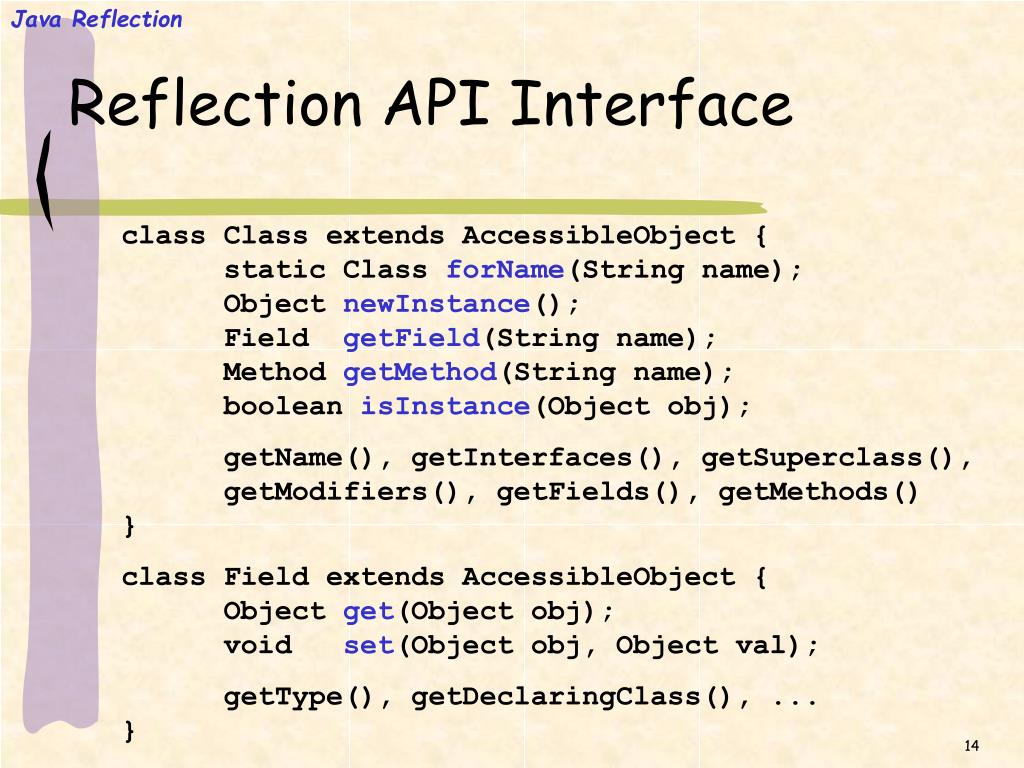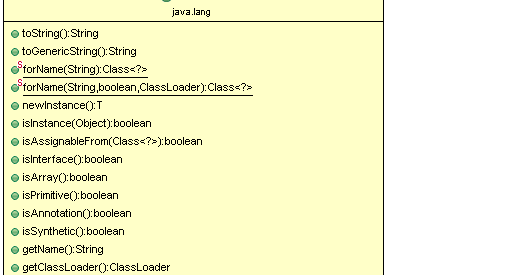

The return value (84) is also wrapped in an Integer object. To invoke a method, a parameter list must be constructed, with the fundamental integer values 37 and 47 wrapped in Integer objects. Once this method has been found and captured into a Method object, it is invoked upon an object instance of the appropriate type. GetMethod is used to find a method in the class that has two integer parameter types and that has the appropriate name. The above program shows a way of doing this. That is, the name of the method is specified during execution (this might be done by a JavaBeans development environment, for example). Suppose that a program wants to invoke the add method, but doesn't know this until execution time. The modifiers themselves are represented by an integer, and Modifier.toString is used to return a string representation in the "official" declaration order (such as " static" before " final"). This is a reflection class that represents the modifiers found on a field member, for example " private int". This example is similar to the previous ones. Each of these types, whether they are fundamental or class types, is in turn represented by a Class descriptor. Once a list of the Method objects has been obtained, it's simply a matter of displaying the information on parameter types, exception types, and the return type for each method. If you use getMethods in the program instead of getDeclaredMethods, you can also obtain information for inherited methods. These include public, protected, package, and private methods. The program first gets the Class description for method1, and then calls getDeclaredMethods to retrieve a list of Method objects, one for each method defined in the class. Object p, int x) throws NullPointerException For example, the Class.isInstance method can be used to simulate the instanceof operator: Once Class information is in hand, often the next step is to ask basic questions about the Class object.
#Java reflection getfields how to#
In the examples below, the three steps are combined to present self contained illustrations of how to tackle specific applications using reflection. Will display a textual representation of the first method declared in String.

For example, the sequence:Ĭlass c = Class.forName("") Method m = c.getDeclaredMethods() (m.toString()) Once this information is in hand, then the third step is to use the reflection API to manipulate the information.

The second step is to call a method such as getDeclaredMethods, to get a list of all the methods declared by the class. The latter approach accesses the predefined TYPE field of the wrapper (such as Integer) for the fundamental type. To obtain Class information on fundamental types. One way of obtaining a Class object is to say: Class c = Class.forName("") is used to represent classes and interfaces in a running Java program. The first step is to obtain a object for the class that you want to manipulate. There are three steps that must be followed to use these classes. The reflection classes, such as Method, are found in. is a class representing a single class method. This program loads the specified class using class.forName, and then calls getDeclaredMethods to retrieve the list of methods defined in the class.

That is, the method names of class are listed, along with their fully qualified parameter and return types.


 0 kommentar(er)
0 kommentar(er)
